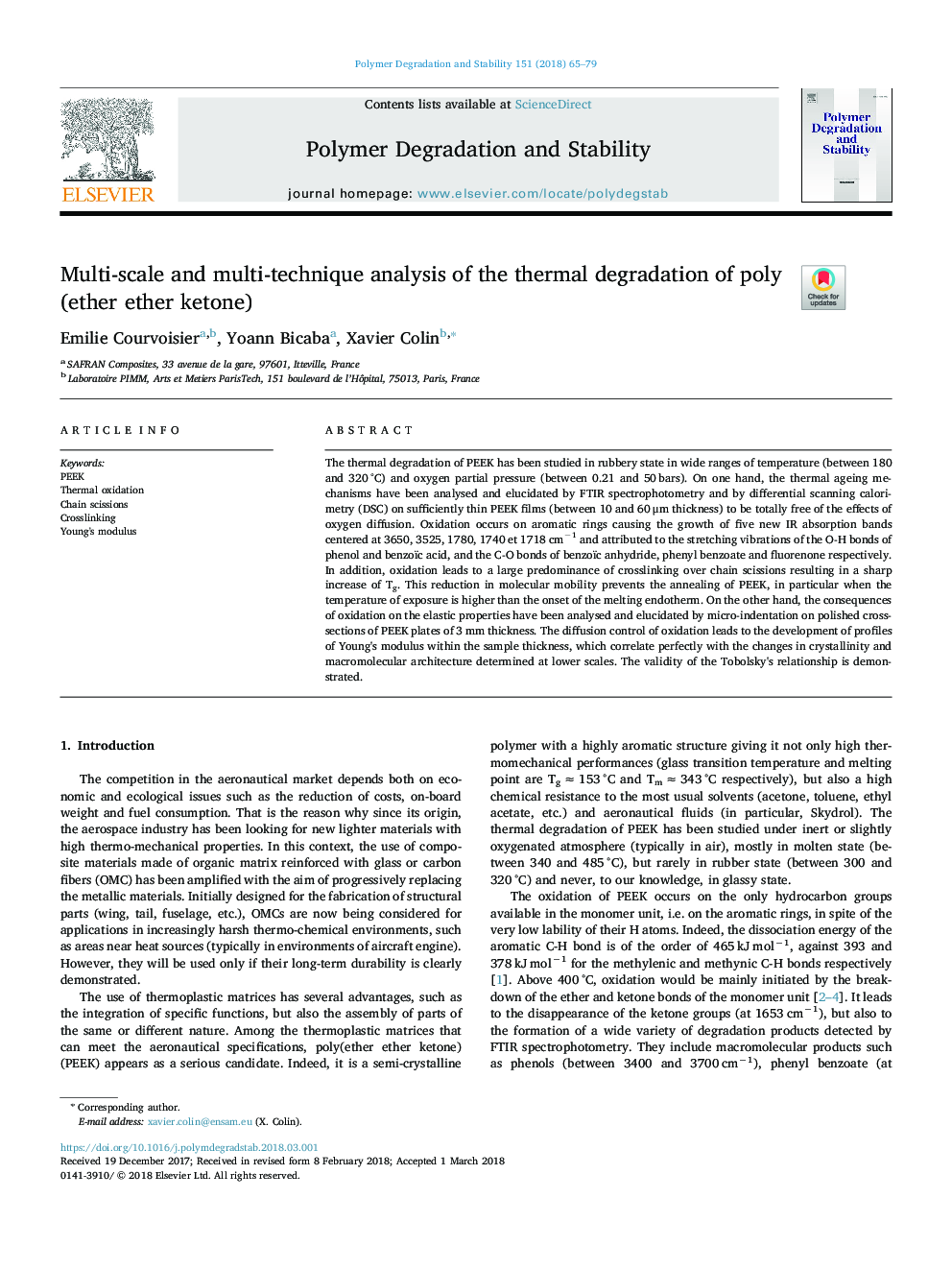| Article ID | Journal | Published Year | Pages | File Type |
|---|---|---|---|---|
| 7824070 | Polymer Degradation and Stability | 2018 | 15 Pages |
Abstract
The thermal degradation of PEEK has been studied in rubbery state in wide ranges of temperature (between 180 and 320â¯Â°C) and oxygen partial pressure (between 0.21 and 50â¯bars). On one hand, the thermal ageing mechanisms have been analysed and elucidated by FTIR spectrophotometry and by differential scanning calorimetry (DSC) on sufficiently thin PEEK films (between 10 and 60â¯Î¼m thickness) to be totally free of the effects of oxygen diffusion. Oxidation occurs on aromatic rings causing the growth of five new IR absorption bands centered at 3650, 3525, 1780, 1740 et 1718â¯cmâ1 and attributed to the stretching vibrations of the O-H bonds of phenol and benzoïc acid, and the C-O bonds of benzoïc anhydride, phenyl benzoate and fluorenone respectively. In addition, oxidation leads to a large predominance of crosslinking over chain scissions resulting in a sharp increase of Tg. This reduction in molecular mobility prevents the annealing of PEEK, in particular when the temperature of exposure is higher than the onset of the melting endotherm. On the other hand, the consequences of oxidation on the elastic properties have been analysed and elucidated by micro-indentation on polished cross-sections of PEEK plates of 3â¯mm thickness. The diffusion control of oxidation leads to the development of profiles of Young's modulus within the sample thickness, which correlate perfectly with the changes in crystallinity and macromolecular architecture determined at lower scales. The validity of the Tobolsky's relationship is demonstrated.
Related Topics
Physical Sciences and Engineering
Chemistry
Organic Chemistry
Authors
Emilie Courvoisier, Yoann Bicaba, Xavier Colin,
